Aug 14, 2006 Mount St. Helens, Washington
Right off the bat, I want to say that this entry will have a whole lot of photos. Our visit to Mount St. Helens was Terry's idea, and what a great idea it was!
I certainly remember when Mount St. Helens was all the news and have had a fascination with other volcanoes for years (we particularly enjoyed Kilauea when we were in Hawaii), but I never really thought about visiting Mount St. Helens. In my mind it was all done and there wasn't a lot to see, but was I ever wrong!
The first thing I didn't realize was that there are five different visitors centers over a stretch of fifty miles! We started out early and the day was just phenomenal, going from one center to the next, always getting closer to the actual volcano
What a great day!
This first photo is of one of the columns in the first Visitors Center. There are many of these scattered about the center, all hand carved and all different. I thought the carving was exceptional.

This next photo is a stained glass window depicting the eruption. At first glance from a distance, I thought it was a photo. The quality of all the artwork depicting the eruption was just astounding.
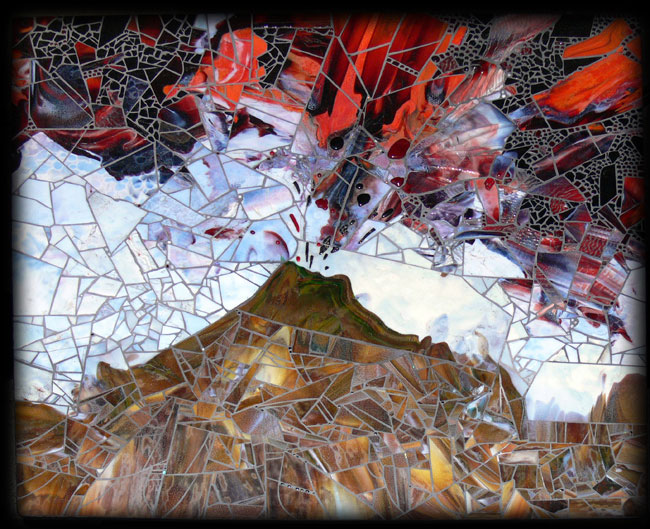
This volcano has a long history of eruptions. The Native Americans have had many names for it over time, and I apologize for my lack of accurate information. It's been so long since we visited here! I had a whole packet of information I had set aside for this entry, but unfortunately I left it at home, so much of what I wanted to write will have to be added later.
I particularly included this photo of an old oil painting because I was fascinated by the idea of what the early residents of this area must have thought of this mountain. Mount St. Helens is just one of a long line of volcanoes in the Cascade Range, but it is by far the most active according to kept records.
I do remember one story that the Native Americans had designated this volcano as female and another nearby volcano as male. The Indians believed them to be a bickering husband and wife couple, often belching smoke and ashes at each other. I liked that story a lot.
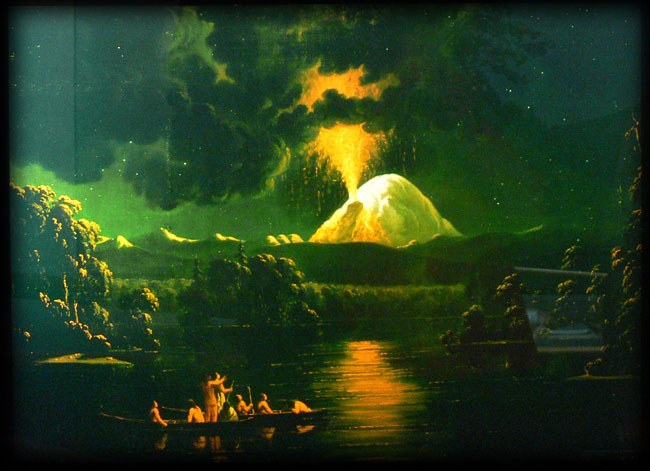
And those of you who RV can cringe right along with me at this photo, taken on the day of the eruption in 1980.
For my money, that red rig in the lower left looks a bit too much like Cholula for comfort . . .
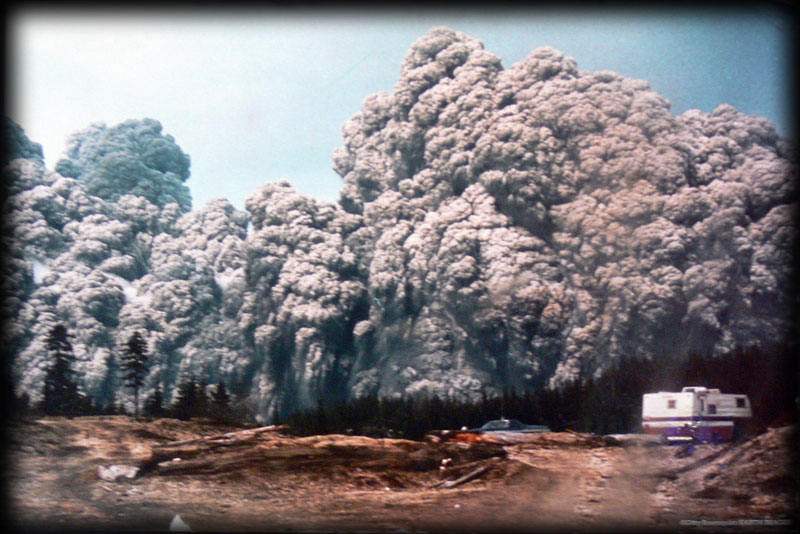
I was going to delete this photo, but every time I look at it, I'm amazed all over again at the power expended from this mountain.
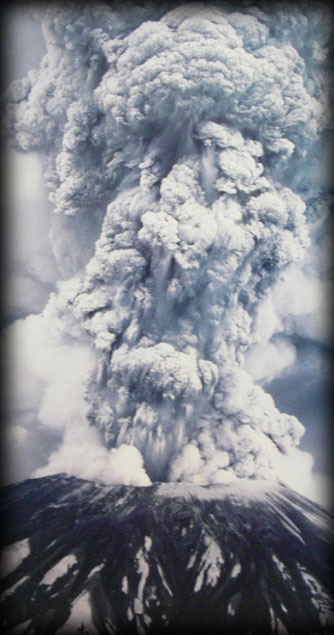
This is the entry way to one of the visitor centers. This mural is about 40 feet high.
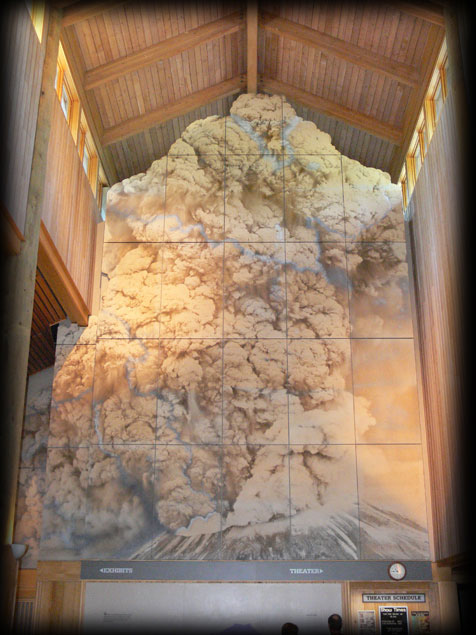
This is taken from one of the lookouts. Prior to the eruption, this was a peaceful valley with no river. What you are actually looking at here is the volcanic mud that washed down the valley from the 1980 eruption. The ash is said to be thirty to forty feet deep and the river flows on top. Amazingly, nature is regenerating at a rapid rate, thus the growth you see in this valley. Since the eruption, many herds of elk have also made this valley their home.
Dead center on the horizon is Mount St. Helens
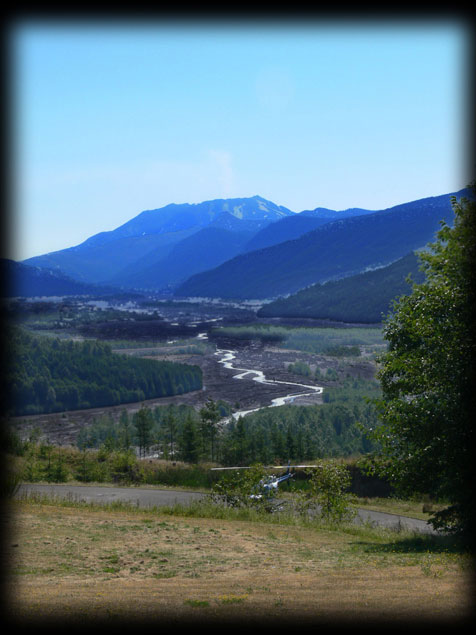
This glass studio is located at one of the visitors centers. This is where all the glassware made with Mount St. Helens glass originates. They get the ash from the valley in the previous picture.
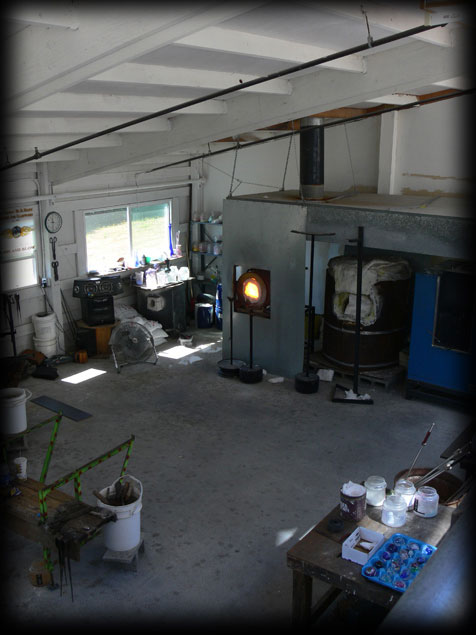
Helicopter rides up to the volcano are available. This is something I've always wanted to do. We talked with the proprieters and told them we were really interested in photography, so they suggested we take a later flight. We were still about thirty miles away from the actual volcano and it was about 11:00AM. We decided to try for the last flight of the day at 5:30PM and kept going up the road.
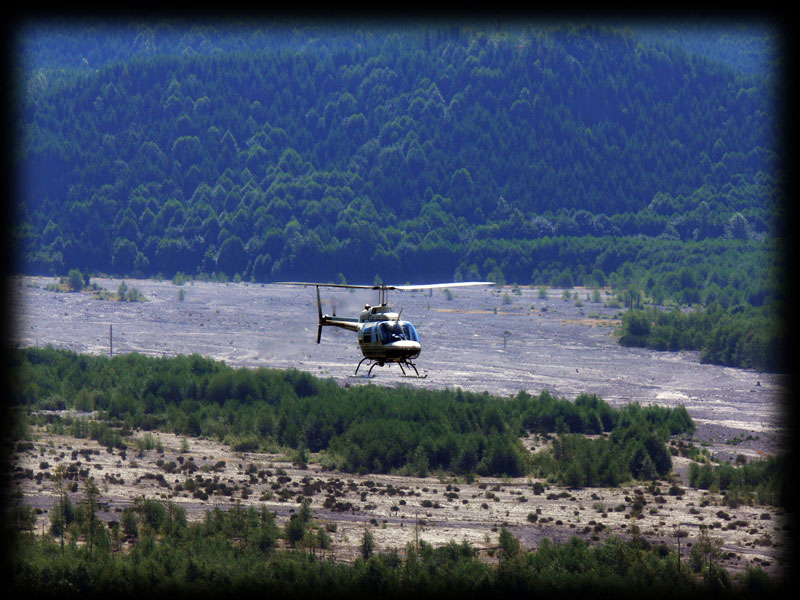
The fifty mile stretch of road going up to the volcano is in excellent condition (mostly new since the eruption) and there are some amazing bridges. We thought this one was quite beautiful. The engineering of the roads and bridges is pretty remarkable for such a remote location, or is it just that I'm used to the spectacularly bad roads in California . . .
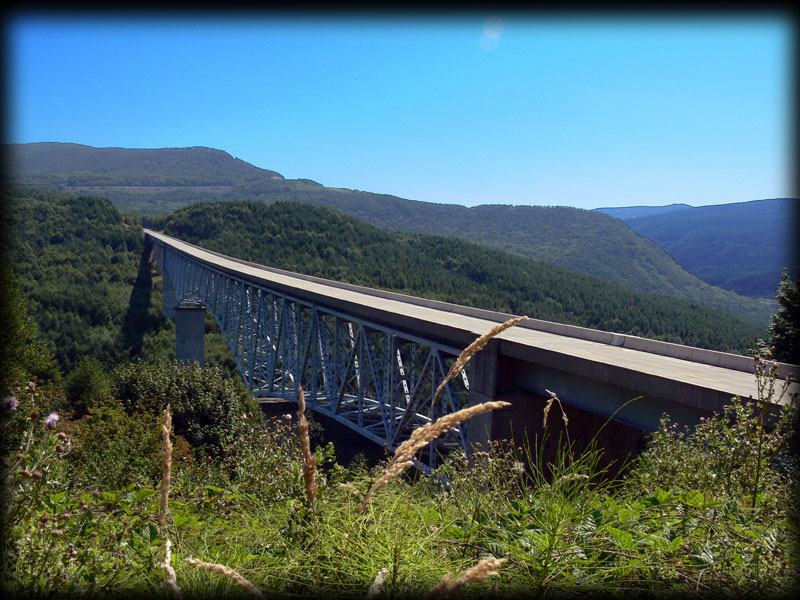
Another shot of the valley of mud. Mount St. Helens is geting much closer, and now you can just see the glacier that exists year round on one side of the volcano.
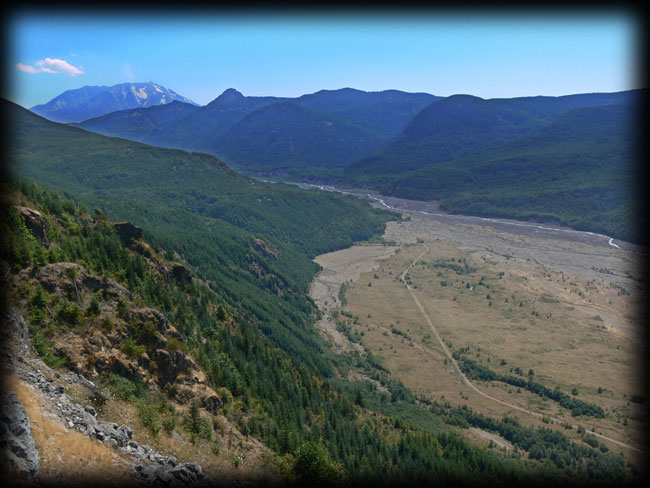
A silly picture (and one I couldn't make look better no matter how hard I tried). I liked it because the bare spot looks just like a big old pair of lips!
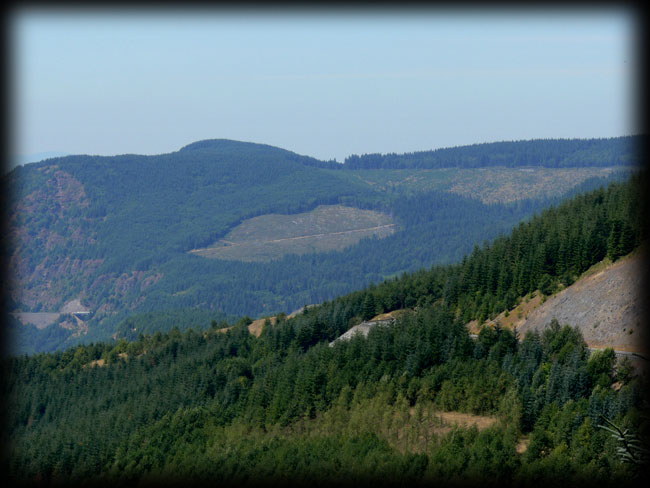
Each visitors center has a different perspective, so the adventure up to the volcano is never boring. In my favorite, you go through all the exhibits, then you enter a darkened room with a movie playing on a small screen. The room itself is covered with what appears to be ash and mud from the volcano, and the lighting makes it appear that the sun has been totally blocked out, almost like an eclipse. They have set the temperature to warm and there is even a unique smell. It really feels very much like what I believe it was like that day back in 1980. As you watch the film, rich with interviews of survivors, it's incredibly effectuive.
One fact I found interesting is that those closest to the volcano could not hear the blast: however those that were at least 60 miles away, heard the tremendous noise. This chart explains the phenomenon.

I took this picture at one of the lookout points. Many of the Rangers talked about what an amazing recovery has taken place around the eruption. While most people thougt the area would look like a moonscape for generations to come, this area has recovered remarkably fast. The plant life is abundant and beautiful.
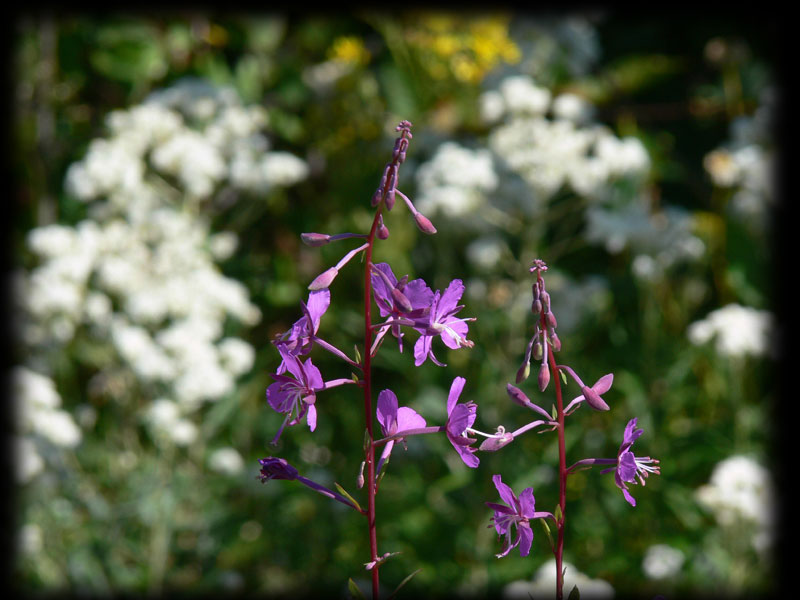
Here's another shot of one of the rivers that never existed before the eruption. There's a name for these little islands that dot these waterways (and if I could find my literature, I'd tell you what that name is!).
These islands were created from actual chunks of rock that were strewn from the bowels of the earth by the eruption. Down to the right you can see others, submerged just below the waterline.
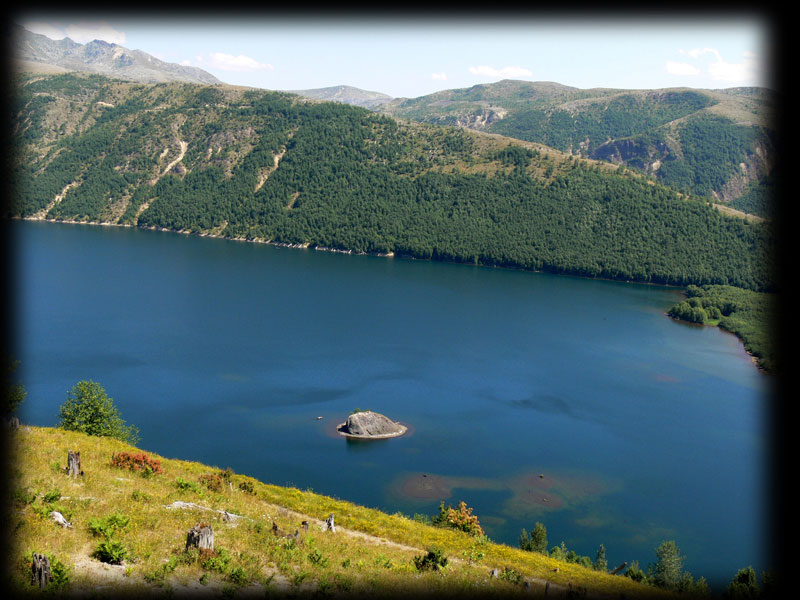
A close up of one of the islands, these fascinated me.
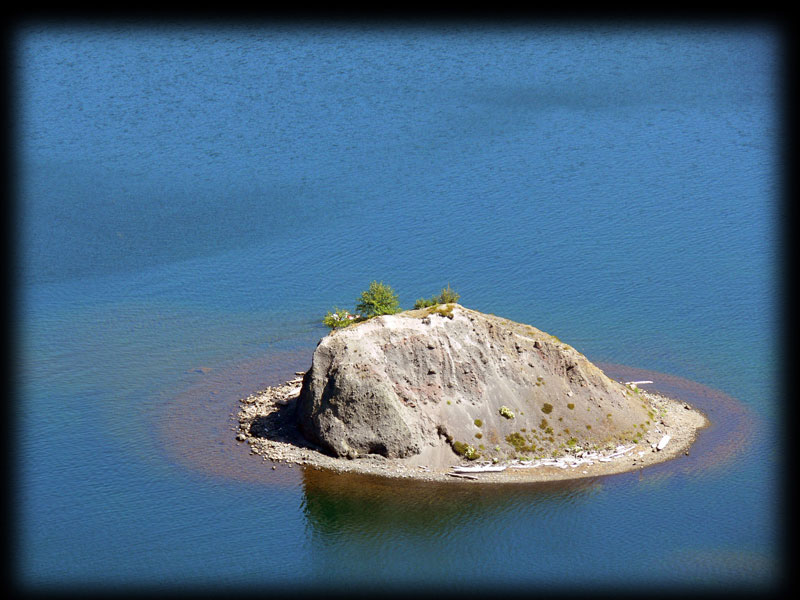
As we got further up the mountain, we noticed that there was a wisp of smoke coming from Mount St. Helens.
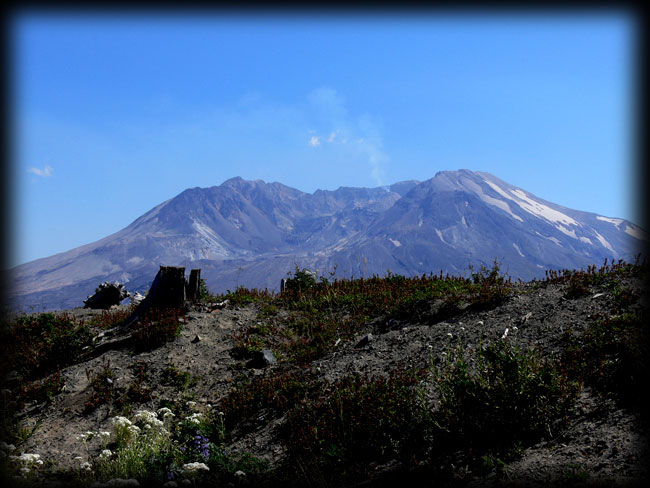
Here we are at the last lookout before we reached the final Visitors Center. We noticed that the smoke was getting a bit thicker. We were talking with folks who lived in the area and the lady said she had been up here many times, but never seen any activity. As we were talking, Terry mentioned that he thought there was some activity going on at that very moment.
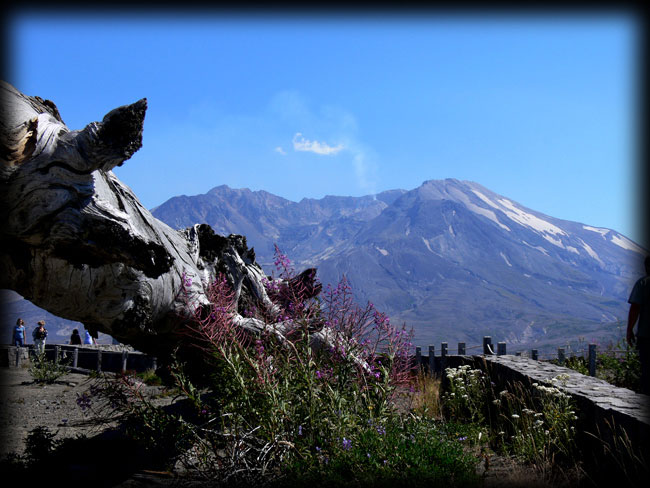
Here's a series of shots I took over a ten minute period. This was pretty exciting stuff!
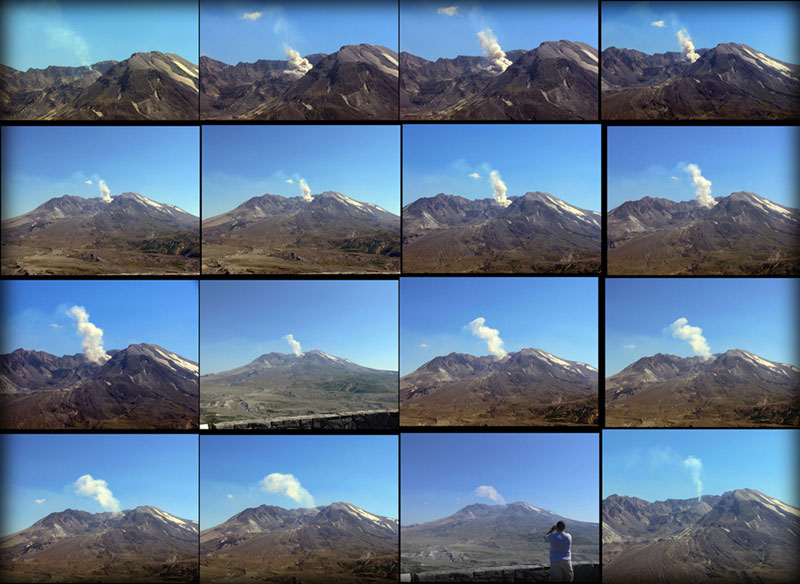
After the activity died down a bit, we went up to the final Visitors Center. At this point, you are still five miles away from the volcano, but the view is stupendous.
I got this shot using the 12x zoom on my camera. This is a view of the lava dome that was left after the eruption, and it is still quite active. We asked about the activity we had seen earlier and it was explained to us that the lava vent is continually growing. Every day or so, the vent gets so tall that it can't support its own weight and the whole thing collapses in on itself. That phenomenon is what we had seen.
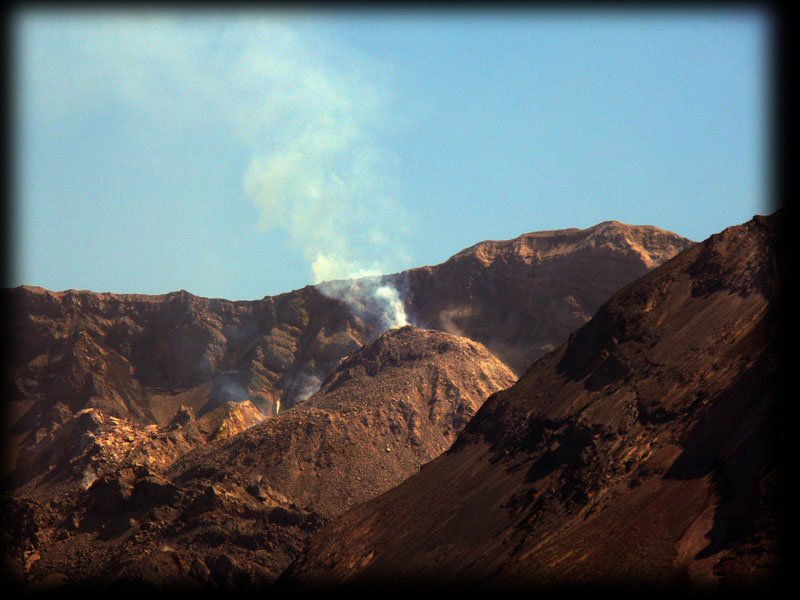
As we were leaving the visitors Center, we saw this little fellow, sitting by our car. He seemed to be posing, so I took the shot.
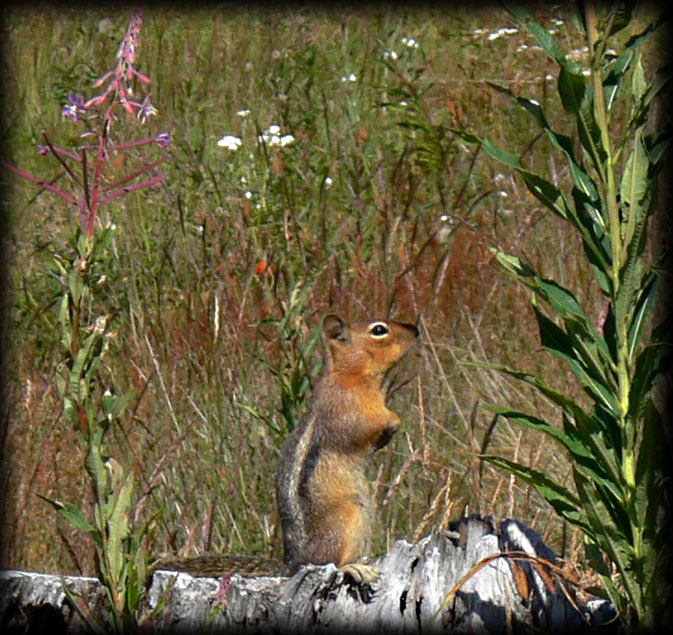
Now we decided it was time to head down the hill for our helicopter ride. We were pretty excited; unfortunately, when we arrived, we got this shot of the helicopter leaving! We talked to the lady at the booth and she told us that this trip had a full load and unfortunately no one else had signed up for the last run of the day , so the last run was cancelled (they require a minimum of three people to make a run). Boy, where is that Andy when you need him!
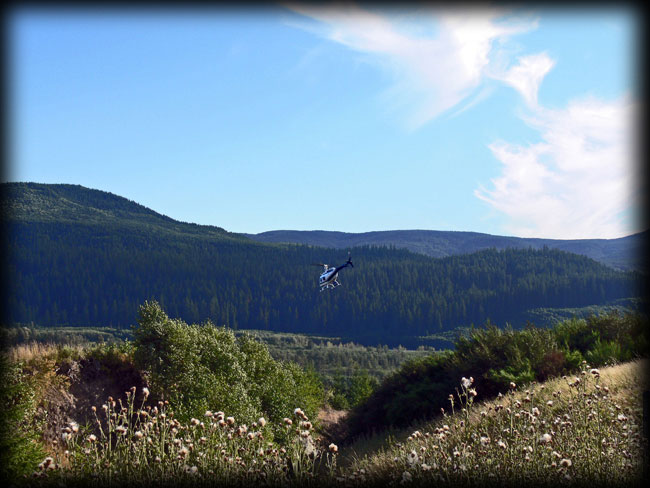
While we were very disappointed, we decided that we wouldn't let it ruin our day.
If you ever have the chance to take the trip to Mount St. Helens, DO NOT pass it up. In all our travels, this has been one of the more spectacular adventures we've experienced.
I've said it before and I'll say it again, Life is very good.
Back to the Travel Table of Contents
![]() This Website was created on a Mac by Kate Klein
This Website was created on a Mac by Kate Klein